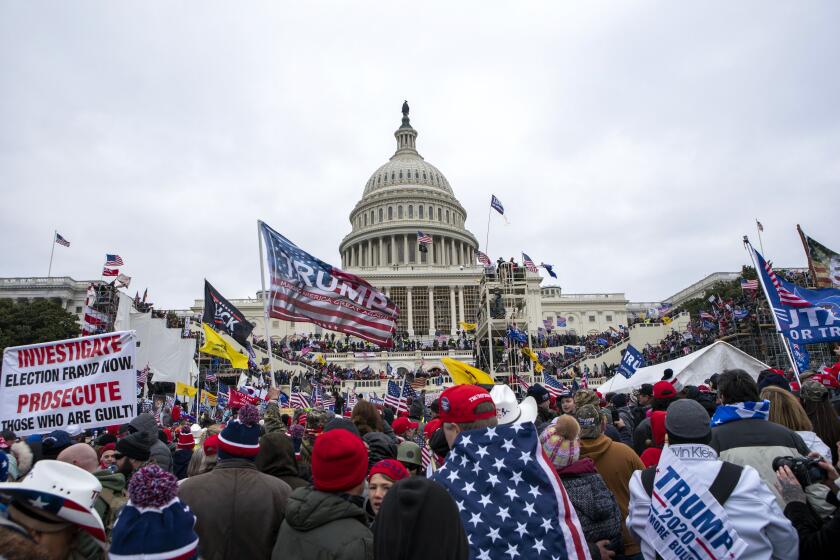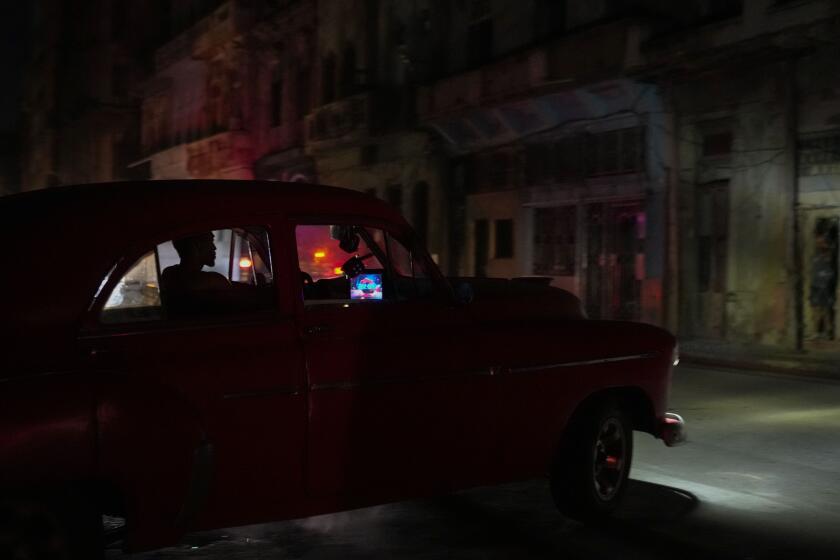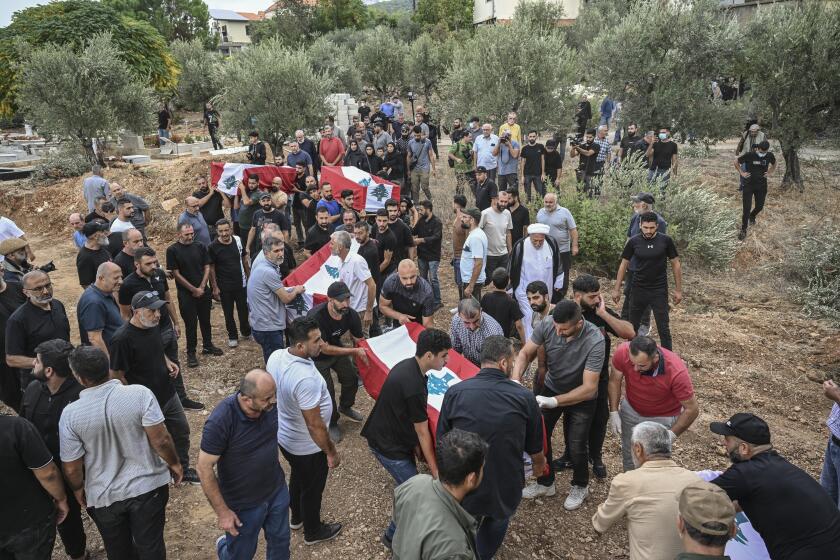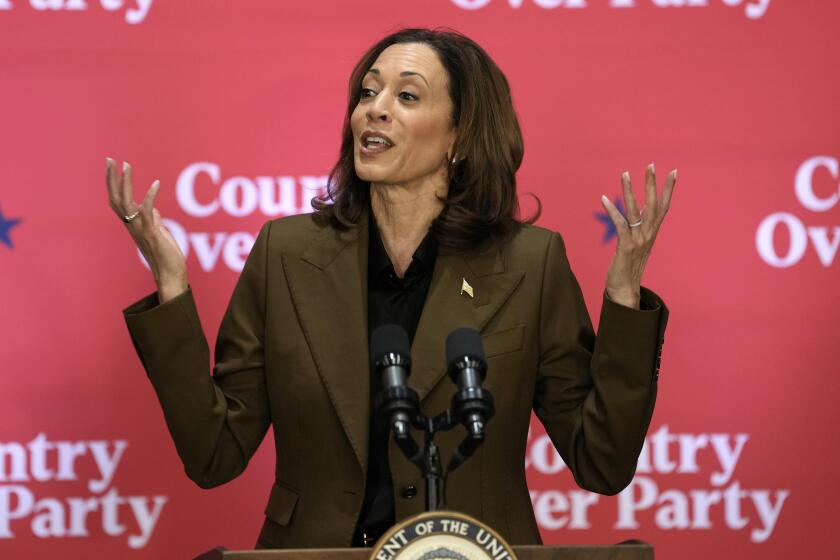City Tense After Death in Arrest
The video from the Cincinnati police cruiser is incomplete.
But it is clear that six police officers are struggling to subdue a very heavy and very angry suspect. He lunges at them. They club him with their nightsticks. Finally, they tackle him, yelling all the while at him to put his hands behind his back.
When they flip him over, one officer notices he’s not breathing.
Nathaniel Jones, 41, died shortly after that confrontation with police outside a Cincinnati burger restaurant Sunday night. Jones was African American. Five of the officers at the scene were white; one was black.
Those facts alone were enough to stir racial tension Monday in a city that has long been rent by a deep distrust between the police force and African Americans.
As snippets of the video -- the lunge, the nightstick blows -- were played over and over on local television, African American activists demanded police reform.
And Roger Owensby ached afresh for his son, Roger Jr., who was killed in a scuffle with police three years ago -- asphyxiated as officers swarmed him, knocked him to the ground and grabbed him around the head.
“As I watch the video, it’s almost like I’m seeing and feeling what my son was going through,” Owensby said in a telephone interview.
Roger Owensby Jr., who was 29, was one of 17 African American suspects killed by Cincinnati police officers from 1995 to 2001.
Rage at the deaths boiled over into three days of riots in April 2001, after a white police officer fatally shot an unarmed black teenager who was fleeing arrest down a dark alley.
Since then, city leaders and federal monitors from the Department of Justice have put in place dozens of reforms.
There’s a new city manager -- an African American woman -- and the police chief reports directly to her. There’s a civilian panel empowered to review police actions; it already has started investigating Jones’ death. Nearly all police cars now have video cameras. And the department has put in place new guidelines on the use of all types of force, from nightsticks to Mace to dogs.
“Certainly, any time there’s a death, it’s not positive, but we have put mechanisms in place so that the community will be informed of what happens and will know there’s a fair process of investigation, with no stone left unturned,” said Vice Mayor Alicia Reece, who is African American.
By Monday morning, city employees trained to defuse confrontation were walking the streets of black neighborhoods, knocking on door after door to talk -- and to listen. When the new City Council was sworn in Monday afternoon, one of its first orders of business was a moment of silence for Jones and his family.
The strategy seemed to be keeping the peace, despite bubbling anger among African Americans.
“We have been through a lot in this city. We’ve come a long way,” said Mayor Charlie Luken, who is white. “So far, all the discussion I’ve heard seems to be fairly calm and rational.”
The incident began when the manager at a White Castle fast-food restaurant called paramedics about 5:50 a.m. to report a man apparently unconscious on the grounds.
By the time the fire department arrived, Jones -- who weighed about 350 pounds -- was awake and shouting. Paramedics concluded that he was out of control; they called police for backup.
The video showed that the officers repeatedly yelled at Jones to stay back and put his hands down. He did not. The scuffle was brief but violent. When they had subdued Jones and noticed he was in distress, the officers called an ambulance. Jones died shortly afterward.
The coroner has not determined a cause of death. But preliminary autopsy results showed that Jones had cocaine and PCP, or “angel dust,” in his blood; both drugs can cause aggressive behavior, Hamilton County Coroner Carl Parrott said.
Luken, the mayor, defended the police, saying they were justified in using force because Jones’ sheer bulk made his body a “deadly weapon” as he lunged toward the officers.
Roger Webster, president of the police union, said the officers’ swings with the nightsticks did not constitute brutality, but instead were part of a “pain compliance” technique approved by the federal monitors reviewing the department’s use-of-force policies.
“It’s a jab maneuver, into the side of the torso, and at every jab they say: ‘Put your hands behind your back,’ ” Webster said. “It’s not a beating, and I really resent that everyone says it is. The officers could have had four or five shots at his head, and they didn’t. It’s not excessive use of force and I wish people would stop inflaming the public about it.”
At least three other black suspects have died in confrontations with or flight from the police since the 2001 riots. Jones’ death, however, seemed to stir more emotion because of the videotape.
On Monday, the online chat room of WDBZ 1230 AM, which carries talk shows popular among African Americans, buzzed with passion.
“Is Cincinnati ready for more uprising?” one posting demanded.
“The cops today are out of hand,” another read. “They should all go to jail for murder.”
But there were many comments, too, calling for restraint -- and even sympathizing with police.
“What would you have liked the officers to do, stand there and get the snot kicked out of them?” one listener asked.
“Yes, it’s unfortunate that he died, but he attacked them,” another wrote. “Of course, the officers’ actions were justifiable.”
More to Read
Sign up for Essential California
The most important California stories and recommendations in your inbox every morning.
You may occasionally receive promotional content from the Los Angeles Times.










